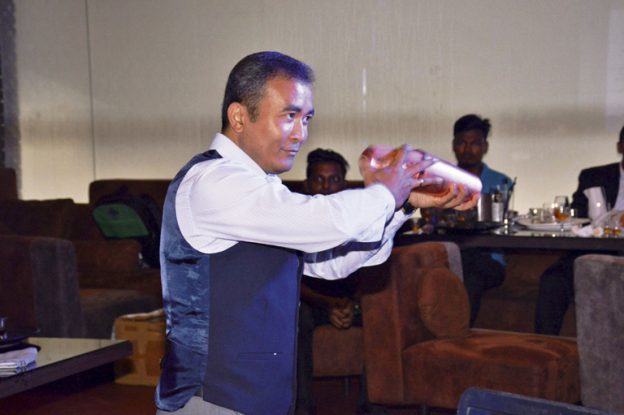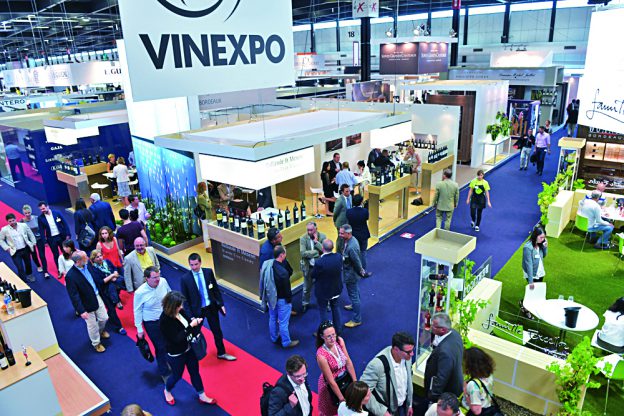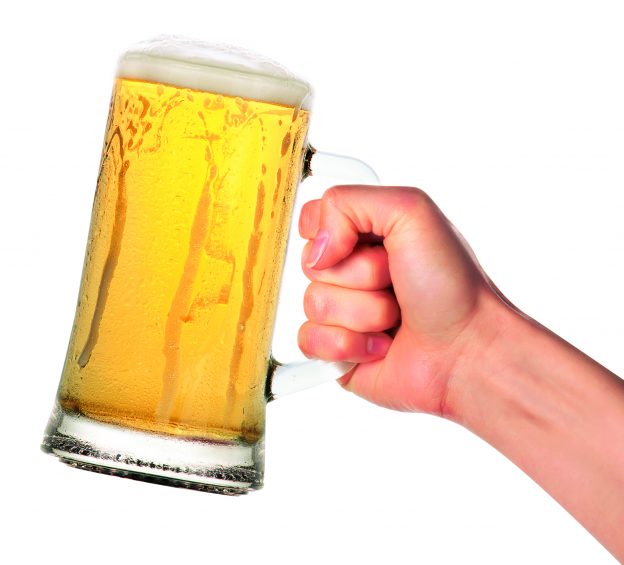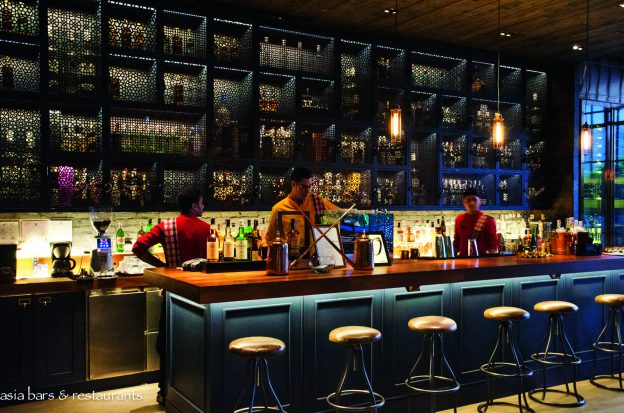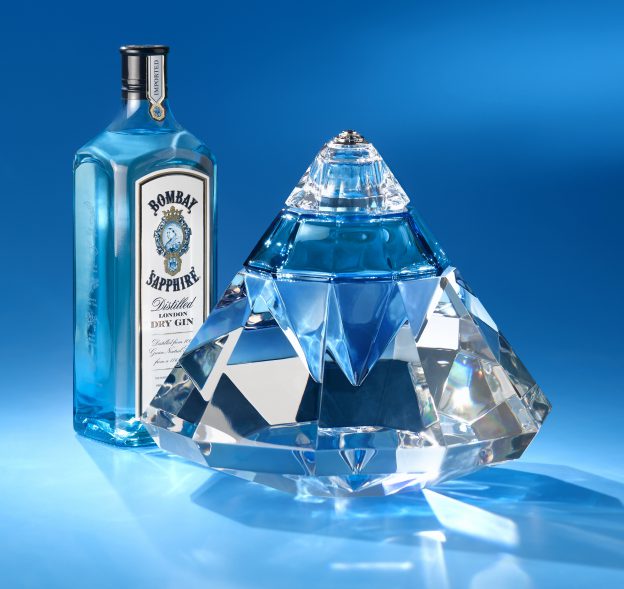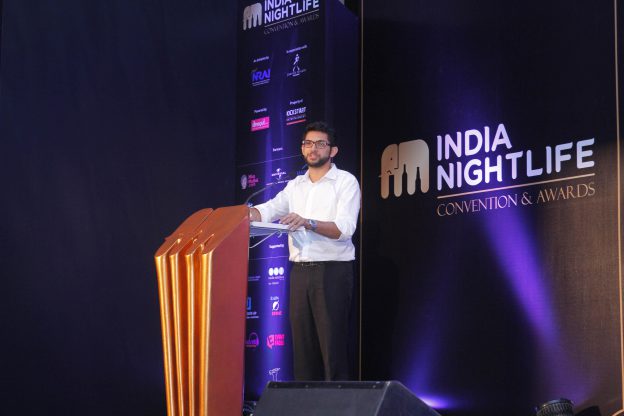Having rediscovered its wine, Armenia, once considered a cradle of winemaking, is again trying to gain popularity in the world of wine.
The story of Armenian wine began when Noah planted the first vineyard on Mt. Ararat and famously became drunk on his own wine, mentioned in Genesis 9:20. It is no coincidence that Armenia, known as the birthplace of wine, is also the site of the oldest known winemaking ruins, dating back to 6,200 years. Also, Herodotus, Greek historian, mentioned in his work ‘The Histories’ that merchants would carry wine down the Tigris and Euphrates to Babylon in barrels of palm tree wood during the fifth century. This is the first cited example in the recorded history about the use of barrels for wine storage.
Armenia has incredible amount of proven evidence that shows winemaking began 6,200 years ago. During a 2011 excavation, archaeologists announced the discovery of the world’s oldest wine production facility in Armenia. Located in the Areni cave complex, it consisted of a shallow basin for pressing grapes, a vat for storage, and fermentation jars. They also found grape seeds, remains of pressed grapes, and dozens of dried vines. James Owen from National Geographic wrote- “The site gives us a new insight into the earliest phase of horticulture—how they grew the first orchards and vineyards.”
Revival of Armenian Wines
The development of wines began in 2007 when new vineyards and organisations came in to existence. After building growth during 90s and early 2000, the wine sector is now one of the crucial segments for Armenia’s economic growth and employment. In the last five years wine production has increased exponentially. Government has taken several steps to promote the wine production in the country and established the Vine and Wine Foundation in 2016. It implements government policy and development projects in viticulture and wine making sector. The primary objective of the foundation is to preserve and develop the rich cultural and historical heritage of Armenian wine in Armenia as well as around the world.
According to 2014-2025 development policy of the government, the country seeks to develop several sectors that will contribute to economic growth and poverty reduction. Particularly 2010-2020 Sustainable Agricultural and Rural Development Policy prioritises high-value added processing industries, such as wine production. The industry has received large investments, mainly from foreign investors and local entrepreneurs, secured advanced technology and improvement of production processes.
Currently, there are more than 45 Armenian companies producing over 100 varieties of wines. Overall 83percent is produced in the Ararat Valley and Armavir region. The other four winemaking regions are Tavoush, Aragatzotn, Syunik, and Vayots Dzor.
Volumes of wine produced in Armenia have been showing a steady growth from 5.9 to 6.8 million litres in the last 5 years.
Given the favourable government policies for wine production and the number of newly established wineries, it will not be wrong to expect an increase in the wine production volume. During recent years wine exports as well as the local wine sales have noticeably increased. Armenia’s key markets include Russian followed by the USA and China. Armenian wine market has expanded and wines are exported to Italy, Lithuania, Canada, and Switzerland. Larger exports volumes in new markets were observed in France, Belgium. According to International Trade Centre, Lithuania, Poland and France are promising markets where an overall sale has a tendency to grow.
Terroir and Native Grapes
Armenia has an exceptional geographical and climatic condition for vine cultivation. Volcanic soils, harsh climate and high altitude create an interesting union of the terroir’s elements.
“The complex interaction of natural conditions within the small territory of the country induced and affected the formation of quite a peculiar range of soil types, from the volcanic and semi-desert zone to the mountain meadow soils of alpine type. The climate is dry and continental due to mountains in most of the regions,” Syune Barseghyan of Armenia Wine Company (AWC) said.
Armenian grapes are distinguished by their aromas. Armenian ingenious grape varieties include Areni and Voskehat. Areni is the best known variety. It is thick-skinned and late-ripening grape, considered to be one of the finest varieties that produce fresh, bright red wines with soft, elegant red fruit flavours. Used for the production of dry wines, as well as sparkling and dessert ones, Voskehat, which means ‘golden berry’, is believed to have been cultivated about 3.5 thousand years ago.
An Icon of Modern Winemaking- Armenia Wine Company
A family-owned company, Armenia Wine Company is born out of the love the family has for its country. While vineyards plantation started in 2006, the company was established in 2008. Flaunting an array of award winning wines and state of the art winery, the AWC is the leader in local market as well as in exports in wine segment.
Even though Armenia has been producing wines for more than 6000 years, it was the Armenia Wine Company that raised the standard of the Armenian wine at international level. Armenia is a country with 1000m average altitude that produces natural high sugar concentration, aromatic and colourful grapes. The AWC is the first company to accomplish the perfect alchemy from Armenian high quality grapes to create international standard wines. “We are thankful to our French consultant, our ‘on-site’ French winemaker expertise and the state of the art European technology for making this possible,” Barseghyan said.
The company’s portfolio is represented by wines which display indigenous grapes and terroir diversity. Maintaining the diversity, the company is working in three main winemaking regions – Armavir, Aragatsotn and Vayots Dzor. “Vineyards located in Armavir region provide us the main white Kangun variety used for making still white and sparkling wines. French grape varieties Merlot, Cabernet Sauvignon and Cabernet Franc used as blends with Armenian grapes. Vayots Dzor region, known for the world oldest winery (6200 year old), provides us the iconic Areni grape used in our red wines,” informed Barseghyan.
Armenia Wine Company produces four ranges of wines- Armenia, Yerevan, Takar and Tariri. “We are producing wine for every taste and palate and our assortment includes classical red, white, rose, sparkling as well as dessert wines like Muscat and wines made from Pomegranate. Armenia and Yerevan are young, soft, fruity wines that show the unique characteristic of local grape varieties in their natural state. Takar and Tariri are premium wines, much more complex, aged in oak barrels. The price of our wines ranges from USD 3 to 23,” Barseghyan said.
The annual production capacity of the company is 4 million bottles of wine, 1 million bottles of sparkling wine and 3.5 million bottles of brandy. According to the company’s statistics, local consumption of AWC wine constituted about 44 percent of the still wine and 74 percent of the sparkling wine in 2016. This year, the numbers are significantly different due to large increase in exports. The export volume of still wine has reached to 72 percent and 61 percent for sparkling, whereas local sales have accordingly constituted 28 percent of still wine, and 39 percent of sparkling.
The ARC’s products are exported to more than 14 countries including USA, Canada, China, Mexico, Japan, Russia, Israel, France, Belgium, Czech Republic, Lithuania, Bulgaria and Belarus. This year, the company is planning to sell its wines in new markets such as UK, Poland, Finland and Kazakhstan.
Father-Daughter Duo Rocking the Wine Business-Van Ardi
Returning to his roots, both physically and metaphorically, founder and winemaker, Varuzhan Mouradian and his family moved from California to Armenia. Having fallen in love with wines, he knew he had developed a passion for making wine he couldn’t ignore. Van is the ancient capital of Armenia with rich winemaking history, where the family’s ancestors belonged. The winemaker and the family named the winery Van Ardi, meaning ‘Sun of Van’.
After scouting various winemaking areas in the country, Van Ardi settled on an exquisite plot in Ashtarak, also an ancient winemaking region of Armenia. The land was bare, and filled with stones and boulders, but its volcanic soil, slope, and position, created a tangible terroir that evoked a sense of promise. Today, the nine hectares of land is being used to plant five grape varieties.
The winery started producing wines in 2013 while the vineyards were planted in 2008. Van Ardi uses endemic Armenian varieties like Areni, Kakhet, Haghtanak, and Kangun besides Syrah. Selling more of red wines and rose, Van Ardi currently produces 50,000 bottles which is approximately 37,500 litres. Van Ardi plans to expand the winery to increase the production up to 130,000 bottles.
Van Ardi has been exporting wines since its first vintage. Initially it exported 40 percent to Russia and the rest was consumed locally. Now, 50 percent is consumed locally and the rest is exported to Russia, USA, France, United Kingdom, The Netherlands, Lithuania, Belgium, Sweden and Germany. Van Ardi’s wines range from USD 5.5- 10.5.
Describing the competition as ‘healthy’ in Armenia, Ani Mouradian, Director of Marketing and Communication at Van Ardi, said, “Most of the wineries have their own character and are different from each other in function and the kind of wines they produce. Given the number of wineries, competition has increased exponentially in the past three years. However, Van Ardi does not have any threats and we don’t see anyone pushing us off shelves. We are barely meeting our demand; if we had more wine out there, they would be consumed as well.”
Speaking about the competition it faces abroad, Mouradian said, “I feel the countries that have similar profiles in development (Moldova) or are nearby (Georgia) are our biggest competitors as they share/claim a similar history of winemaking. It is very difficult for Armenian wines to make it in foreign markets, because we can’t be price competitive.”
Steeped In Tradition- Voskevaz Winery
Combining the traditional art of winemaking and innovation, Voskevaz Winery produces high quality wines which are unique in their profile as they are produced via autochthonous style; it refers to the winemaking methods as well as to the use of only local grape varieties.
The winery was established in 1932. The renaissance of the winery began in 2004, after the establishment of Voskevaz Wine Cellar LLC. The winery is equipped with the latest Italian facilities to produce high quality wine. Today Voskevaz produces wine using both traditional old karases and modern wine-making technology. However, all of them, without exception, reflect the true nature of Armenia. The wines are produced only from local grape varieties and for wine aging rare high-quality Armenian oak barrels are used. Voskevaz Winery aims to revive the use of this ancient winemaking technology. These wines reflect the true nature of Armenian winemaking.
When it comes to the production of sweet wines in Armenia, Voskevaz Winery has pioneered the use of wine withering technology. Voskevaz products start from USD 5-52 and it sells 10 percent of the produce in Armenia. It mainly exports to Russian Federation, USA (Los Angeles for now), Lithuania, Netherlands, Great Britain and China.
Boasting of several medals at various prestigious local and international wine awards such as Mundus Vini Grand International Wine Award, Decanter World Wine Awards, Sommelier Wine Awards, Black Sea Wines and “Areni Wine Festival”, Voskevaz produces varieties of wines.
The Classic Wine line includes Voskevaz Red Dry, Voskevaz Red Semi-sweet wines (made from Kakhet and Haghtanak local grape varieties) and Voskevaz White Dry, Voskevaz White Semi-sweet wines (made from Voskehat (Kharji), Kangun Armenian grape varieties), Voskevaz Pomegranate fruit wine made from high quality Armenian pomegranate and Voskevaz Rose Dry (made from Areni variety). Vintage Line includes Areni Red Dry, Nuraz Red Dry, Voskepar White Dry, Urzana White Dry wines, Vanakan Red Non Vintage Dry wine made from Haghtanak and Kakhet grape varieties. Vintage liquor wine line includes Muscat Rozali white wine made from rare Muscat Vardabuyr grape variety and Katarine Red wine made from Kakhet variety. Voskevaz Karasi Collection includes three wines made from fine autochthonous Armenian grape varieties Areni Noir, Haghtanak and Voskehat. The wines are fermented in traditional karases (clay jars of 1000 litres) and aged in new Armenian oak barriques.
“Voskevaz Karasi Collection, Areni Noir, is one of the rare wines that reflect the pure nature of Areni Noir variety with its terroir. This wine is made with preserved old vines from Vayots Dzor region vineyards at elevation of around 1600m above sea level. Two winemaking tools, 100 year-old Karas and Armenian oak barrel, are used to create this outstanding wine. In our opinion, this kind of harmonious combination of karas and barrel is perfect for the wine tasting and aroma evolution,” said Mary Hovhanisyan, Marketing Manager.
“Also, two more wines made from local Voskehat and Haghtanak grape varieties are included in Voskevaz Karasi Collection. This is a stunning example of world-class wines that will be interesting both for the local and foreign consumer. In our opinion Armenian grape varieties are quite promising and have unique character and great potential,” said Hovhanisyan.
One of the Biggest Wineries- Karas Wines
Karas is a newly established winery in the West of Armavir Region. Located in Ararat Valley, between Mount Aragats and Mount Ararat, Armavir is the smallest and the most densely populated region in Armenia. The convenient location and the favourable climate have allowed this thriving region to become the epicenter of agricultural development.
In 2003 the pursuit for developing an inspiring project led Tierras de Armenia to discover these lands which are rich in minerals and suitable for high quality wine production. The innovation and technology were the key factors in achieving the company’s objective.
“In 2010, the company had its first commercial production and defined a new way in the production of Armenian wines. In the period of six years the Karas Wines have grown from 50,000 bottles to 1, 300, 000 bottles and aims to produce 3,000, 000 bottles,” said Gabriel Rogel, Winemaker.
“To achieve perfect quality, every element, as essential as the overall experience, is taken into account- the location of the vineyards, the window for perfect ripeness, the wine’s journey to its optimal maturity, the visual components, the length of flavours, the aromatic notes as well as the body of the wine. All of these components combine to not only measure the quality and sample of the wine, but more importantly, enhance the experience of the sample.”
Karas has more than 400 hectares of vineyards located at an average altitude of 1100 metres above sea level. The vineyards are part of Tierras de Armenia CJSC, a company that owns 2300 hectares of land in the west of the Armavir region. The soil characteristics are mainly volcanic and that rich loam also contains a stony texture spread with rocks of clay ideally suited for the production of highly concentrated wines rich in colour, aromas and flavours.
Both international and indigenous varieties are planted in the vineyards, including Chardonnay, Viognier, Kangun for white wines and Malbec, Tannat, Syrah, Merlot and Cabernet Franc for red ones. The vineyards are cultivated with modern techniques together with an individual approach for each varietal, aiming to develop the potential of each.
“Karas Wines key markets are the USA and Russia. However, it exports to other countries like France, Germany, Chez Republic, Nederland, Estonia, China, Belgium, Canada and Argentina. The company gets maximum revenue from its premium wines with Karas Red Classic being the best seller,” said Rogel.
Talking about the competition, Rogel acknowledged the fact that Armenian wines are not so famous in the world. However, Armenian wines have something new to offer the world.
Reinvigorating Armenian Wines- ArmAs
Golden Grape ArmAs was founded in 2007 by Armenak Aslanian. Along with his daughters, he preserves an 80-year-old family tradition of wine, naming ArmAs in honour of his grandfather Armenak Aslanian Sr., the original winemaker in the family. He continues to develop ArmAs Estate with a vision to partake in upholding and revitalizing Armenia’s winemaking legacy, in the oldest known area for viticulture and oenology.
ArmAs creates elegant wines that stem from one of the country’s best natural resources, the idyllic terroir of the vine. ArmAs estate is a picturesque display of agricultural achievement, set against the backdrop of the inspiring Mount Ararat. The 180 hectares of previously desolate and disconnected rock-strewn countryside was diligently transformed into a stunning panorama including vineyards, orchards, and a world-class winery.
The ArmAs winery and distillery was completely designed and constructed by Italian architects, engineers, construction crews, and wine industry professionals. During a four year period, from concept, to completion, and utilisation, numerous teams of varied areas of expertise trained local specialists and exceptional students for continuing maintenance and management. The state of the art winery is held to the highest international standards and boasts the latest enological equipment, as well as French and Karabakh oak barrels used for traditional aging.
Only the free run, or the noble juice, of the harvested grapes is reserved for the wines, retaining its finest natural qualities. Indeed, the achievement and individual features that each of the finished wines have attained in the cellar is a testament both to the innate characteristics of the vines, as well as the nurture that these grapes received from the vineyards to the bottle.
When Tradition Meets Technology- Hin Areni
Hin Areni strives to ensure that Areni grape is given the chance to show its beauty and that Armenian winemaking can duly pride itself with quality. The winery combines traditions of winemaking with state-of-the-art modern equipment. A renowned winery design expert from Argentina – Mario Japaz, has designed the winery.
The winery is equipped with modern technology. The grapes are picked and selected by hand, then they undergo gentle pressing in a pneumatic press. The storage is done with T control in SSA tanks. The wines are aged in barrels made from oak grown on the lush slopes of Artskah. The winery has the capacity to process over 250 tonnes of grapes.
The vineyards are situated at an elevation of 1215-1250 meters above the sea level, in and around Areni, namely in Tapq, Getap and Ishkatap. Hin Areni has a total of 32 hectares of vineyards. The sedimentary and rich volcanic soil, coupled with high elevation climate of Areni gives the wines a bold structure and expressive aromatic bouquet.
Hin Areni’s Voskehat is a finely crafted wine, made from grapes harvested in the historic village of Areni, known for its millennial wine making traditions. Supple and elegant, floral to the nose, this wine boasts rich aromas of honey and hints of apricot; it is pleasantly tart and crisp to the finish. While Areni wine is complex yet delicate, slightly peppery to the nose, this wine boasts rich aromas of red berries and is pleasantly tart and crisp to the finish.
Enhancing the Quality of Wines- MAP Company
The Wine Brandy Factory of Hoktemberian was founded in 1944 in the village of Lenughi. After privatisation in 1995 it was renamed- MAP CJSC. Now, the factory is well equipped with modern winemaking machinery. Due to all this, MAP Company has become one of the leading companies in Armenia that can produce up to 14 million litres of first-class alcohol drink annually. The entire cycle of wine and brandy production (receiving grapes, processing, ethyl alcohol distillation, ageing in oak casks in wine-cellars, brandy blending and bottling) is carried out by a classic technology.
Famous for its cognacs, currently, the factory produces wine, fruit wine and cognac (brandy). A variety of red and white wine is produced by the MAP winery. The Aramé brand includes red and white semi-sweet vintage wine as well as wine derived from the Muscat, Saperavi and Areni grapes. The Aramé Grand Reserve is a special edition of red and white dry aged wine. The winery also produces Tigran red dry wine, and Hasmik red semi-sweet wine. Nowadays, MAP products can be found not only in Armenia, but also abroad mainly in Russian Federation, several countries of Europe, and the US.
Vineyards of MAP Company are located in the Ararat valley, which is considered one of the most favourable places in the country for grape growing. The total vineyard area is 114 hectares. More than 10 varieties of grapes are grown; the main ones are Karmrayut, Nerkeni, Tigrani, Kakheti, Haghtanak, Kangun, Rkatsiteli, Saperavi, and Muscat.
Toprit Saifi

